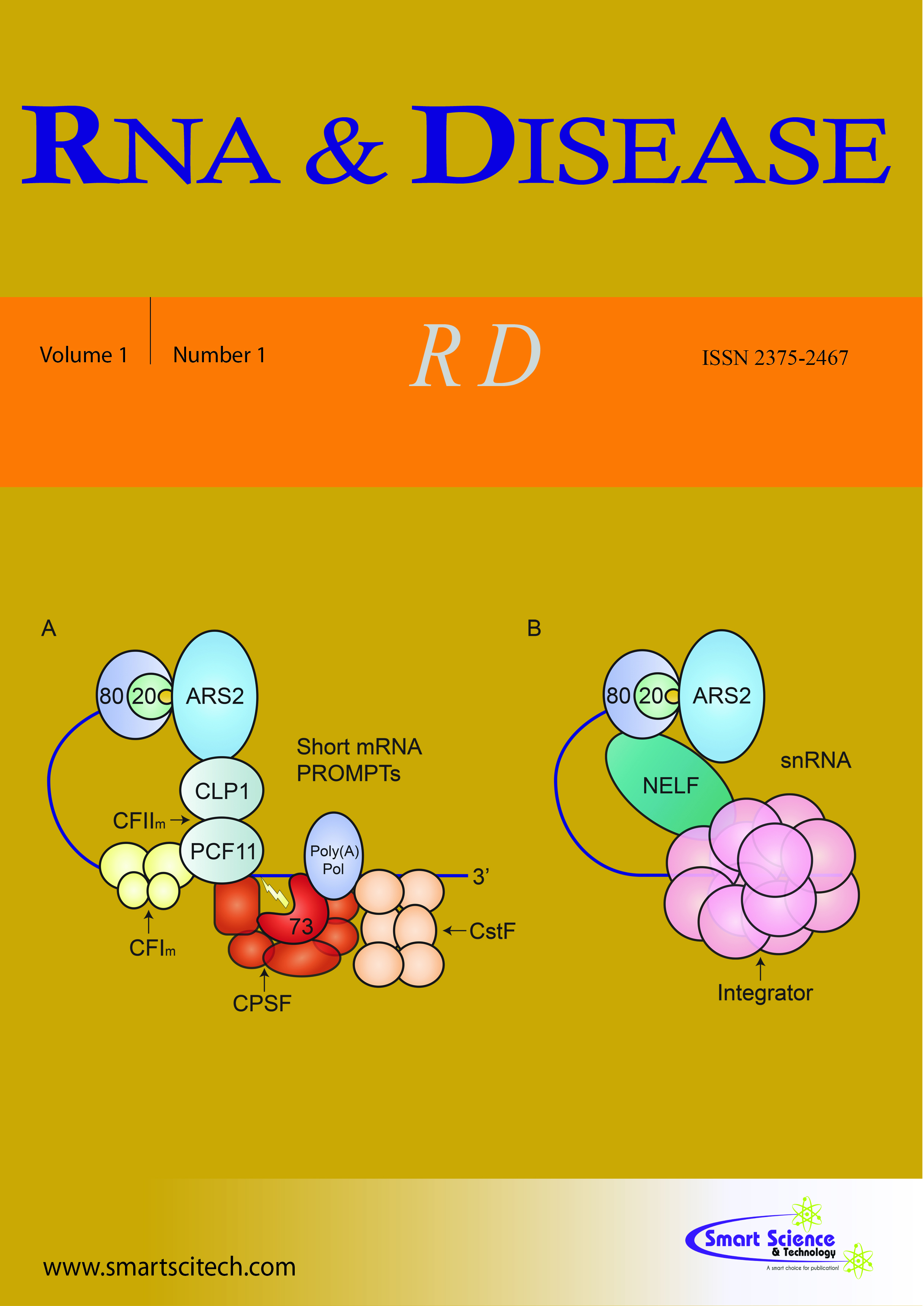Non-coding RNA: From Bench to Bedside
DOI: 10.14800/rd.45
Abstract
Since the Precision Medicine Initiative was launched in 2015, tremendous progress has been documented in this field [1]. Specifically, non-coding RNA (ncRNA) has been getting increased attention as it has been implicated in contributing to different diseases, including cancer [2].
ncRNAs are known to regulate gene expression at the transcriptional and post-transcriptional levels, influencing chromatin remodeling and signal transduction. Deregulation of ncRNAs has an impact on the impairment of physiological programs, driving cells in cancer development [2].
In recent years, ncRNAs have emerged as a previously unappreciated class of gene expression modulators that regulate various cellular processes, especially modulating gene expression in various cancers. Although most ncRNA research focuses on cancers, some scientists have been exploring their relationship to other diseases. For example, Lucafò M and colleagues found that ncRNA growth arrest-specific transcript 5 (GAS5) could mediate tissue damage in inflammatory bowel disease by modulating the expression of Matrix metalloproteinases (MMPs) [3]. Apart from that, the small molecule YK-4-279 blocks chimeric transcription factor EWS-FLI1 activity in Ewing sarcomas via inhibiting the expression of ncRNA Highly Upregulated in Liver Cancer (HULC), which help researchers to interpret the effect path of medicine [4].
Recent breakthroughs in genome engineering, such as CRISPR/Cas9 system, present a useful tool to advance ncRNA research [5, 6]. RNA-programmed genome editing using CRISPR/Cas9 is an ideal platform to genetically manipulate ncRNA molecules to mechanisti-cally and functionally dissect endogenous ncRNA networks in diseases.
Efficiency in vivo delivery, however, has long been a major challenge as currently available lipid nanoparticles (LNPs) can induce liver damage and stimulate an immune response [7]. However, some new technologies seem to provide a better solution, such as LUNAR®-mediated delivery of RNA into cells developed by a commercial company, Arcturus Therapeutics in California [8].
Recent advances on ncRNA are likely to promote precision medicine, and results can be expected in the near future. However, before becoming accessible to patients, ncRNA has a long way to go.












